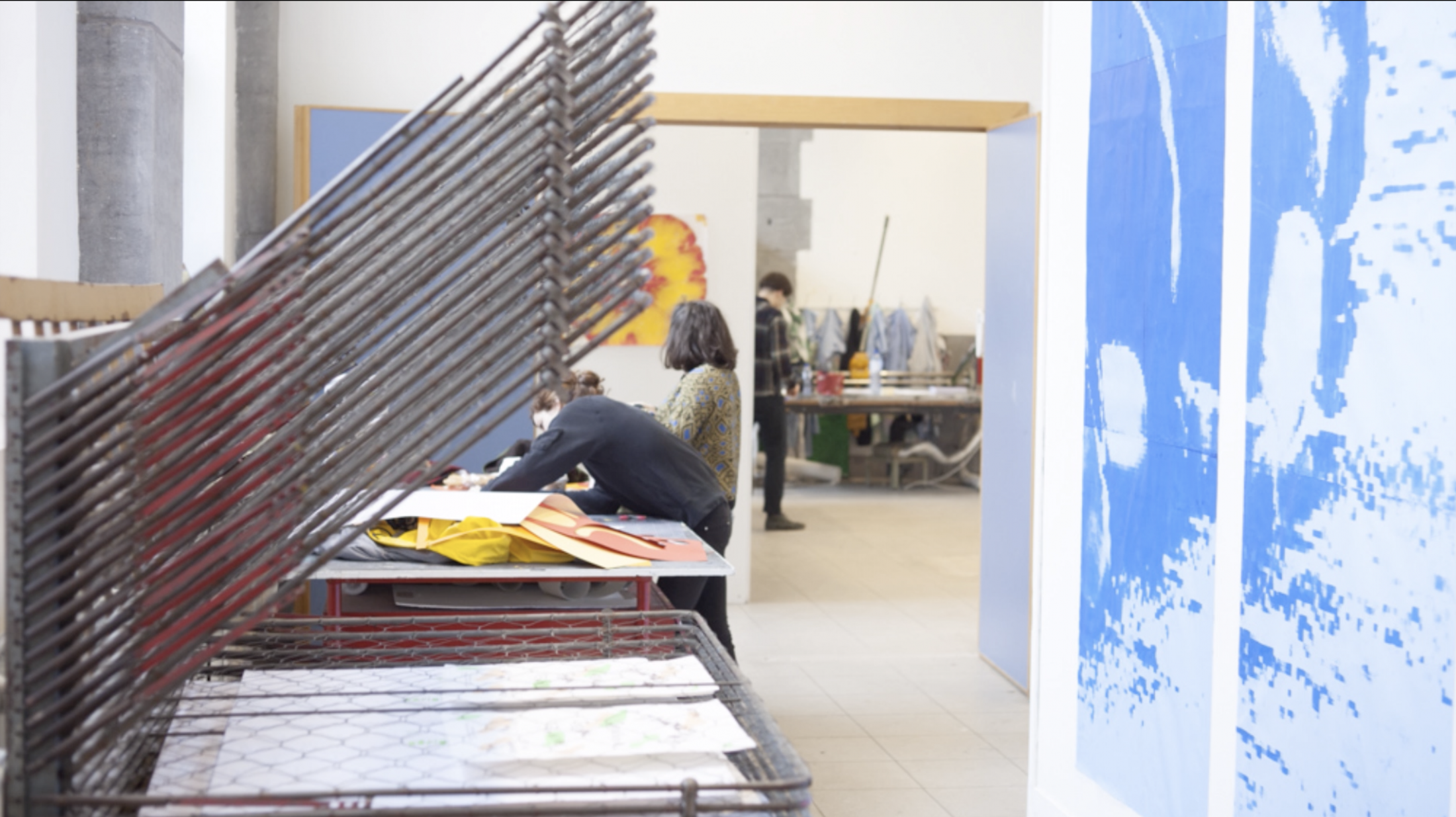Interdisciplinary program
The programs at ArBA-EsA offer interdisciplinary or transdisciplinary pedagogical moments that allow students from different departments to meet and get introduced to new practical and theoretical field.
The programs at ArBA-EsA offer interdisciplinary or transdisciplinary pedagogical moments. These moments allow students from different departments to meet, explore new theoretical fields, engage in experimentation and research, and refine both the intellectual and formal aspects of their artistic work. As they progress through their studies, students are encouraged to open themselves to artistic practices, the theoretical issues related to them, and the areas of reference from other departments. This openness is initially fostered in the first cycle and will continue in the second cycle through various courses and pedagogical frameworks:
In B1 and B2, students from all departments have access to teachings from three main areas: Digital, Research, and Drawing. These areas consist of courses, platforms, or practice spaces common to all students to develop their skills in these fields.
Drawing Pole: The question of drawing/design is transversal across all programs starting from B1. From the face to the project, from the outline to the form, from the gaze to what escapes it... This pole is a meeting point for students from all departments, and its teachings are linked to life drawing practices, drawing as a means of expression, and the work of color. This pole is independent of the Drawing program and is taught to all students in B1 and B2.
Graphic Design Pole: This pole encompasses teachings related to digital practices and issues. It opens up an artistic, technical, and theoretical field of investigation.
Color Pole
Access to La Chapelle (the digital platform) provides students with access to computer and digital equipment, as well as specific software. Visit the dedicated page (hyperlink) to learn more.
Each year, about ten modules are offered to all students in B2 and B3, which they can choose based on their interest in the proposed field of investigation. These modules are designed with a focus on interdisciplinary connections, blending practice and theory. This integration is facilitated by collaboration between teachers of theoretical courses and those of practical (artistic and technical) courses—without excluding the participation of external guest speakers such as invited artists, lecturers, etc.—who, based on a proposal made at the beginning of the year, open a field of theoretical questions and artistic issues that are developed collaboratively with active student participation during the module.
Some examples of modules conducted in recent years:
- The Role of the Archive in In-Situ Installation
- Scenography Module
- Plasticity of Sound: Typology and Perception of the Sound Object
- From Medicine to Art: The Language of "Body" in Visual Arts
- Interactive Devices
- Art, a Child's Play?
- Food (Design?)
Each year, the module proposals are renewed and made available to students.
In B3 and M1, students participate in an Elective Artistic Course (CAC), which acts as a minor alongside their main program. The CAC offers both individual and collective teaching. It allows for new encounters, an interdisciplinary approach, and becomes a space for exchange with the teacher and students from a department chosen by the student, which is different from their main department.
List of Elective Artistic Courses:
- Architecture / Workshop
- Digital Arts / Multimedia Creation
- Color / Color Practice
- Sound Creation / Workshop
- Book and Paper Design / Workshop
- Urban Design
- Decomposition / Moving Image
- Drawing / Workshop
- Printmaking / Workshop
- Painting / Workshop
- Photography / Workshop
- Sculpture / Workshop
- Screen Printing / Workshop
- Tapestry / Workshop
- Resource Library (Récupérathèque)
In the Master's program, a project registered in multiple departments can be supported. This minor framework allows for the intersection of two artistic disciplines. The work is then supervised by all the teachers involved.
In the Master's program, each student selects a seminar to attend in both Master 1 and Master 2, where they interact with students from all departments. The uniqueness of these seminars lies in their collective nature, where a group is formed to approach and think together about specific questions. The seminar allows for the development of a singular theoretical research project in a collective setting on a given topic. Through a series of readings of texts and images, writings by artists or viewers, presentations, intensive discussions, and questions, the student is encouraged to refine and clarify their perspective, exchanges, oral presentations, and writing.
List of Seminars:
- Art and Architecture
- Theory of Contemporary Art
- Performing Arts
- Perception and Interpretation of Space
- Anthropology of Art
- Contemporary Literature
- Narrativity of the Image
- Philosophy / Of Art
- General Sociology
- Current Affairs in the Arts and Reflection on Art (ANG)
At the initiative of the program heads or guest speakers, various forms of activities can be offered to students throughout the year: readings, workshops, exhibitions, radio, etc.
The platforms (technical, digital, and editorial) are accessible to all students, regardless of their year. Students can participate in a Linux training session at La Chapelle, attend a workshop on creating a collective edition, or work on their project within the Prototype Lab.
For more information about the platforms, visit our dedicated pages.
